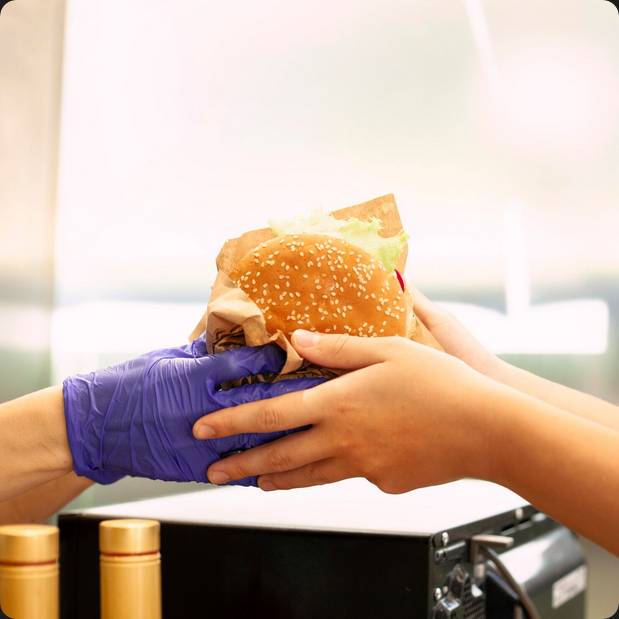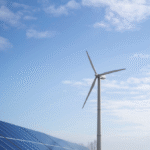Your smartphone can do more than doom-scroll — it can rescue dinner. Food waste apps are turning leftovers into lifelines, cutting climate impact while feeding communities.
Innovating sustainability: the rise of food waste apps
In a culture built on convenience, perfectly edible food has been slipping through the cracks — into dumpsters, then landfills. Food waste apps flip that script. They match surplus from restaurants, bakeries, and grocers to nearby people in minutes, not days. The result is a triple win: lower methane, lower grocery bills, and higher dignity for food that deserves a plate, not a pit.
If you’re imagining “mystery bags” and discount pastries, you’re not wrong — but the ecosystem is bigger. These platforms now span grocer markdowns, neighbor-to-neighbor sharing, restaurant surplus, and even institutional rescues that align with city zero-waste goals. Pair that with smart home tools that nudge you before lettuce turns to sludge, and you’ve got a practical blueprint for less wasteful living (see our guide to smart home tech with food-waste alerts).
“Using Too Good To Go has been a game-changer! I saved money and delicious meals from being wasted. 🌿💸” — a TikTok user
“Olio’s community vibe is incredible. Sharing food has never felt so rewarding! 🍏🤝” — a Redditor
“Flashfood is brilliant! My grocery bills are lower, and I’m helping reduce waste.” — an X user
🚀 Meet the leaders: three food waste apps to try first
Too Good To Go — restaurant & bakery surprise bags
Restaurants, cafés, and bakeries list end-of-day surplus at steep discounts. You reserve a pickup window, grab a “surprise bag,” and save items that would’ve been tossed. It’s fast, fun, and wildly effective in dense neighborhoods.
Olio — neighbor and retailer sharing
Think Craigslist meets community pantry. Neighbors give away edible extras (and household items), while volunteers called “Food Waste Heroes” collect unsold goods from local partners to redistribute. It’s hyperlocal and social, which is why it sticks.
Flashfood — grocery markdown marketplace
Grocers post near-date produce, meat, and dairy in the app; you buy ahead, then collect from a designated fridge at the store. Great when you want visibility into exact items and prices rather than a surprise bundle.
🌍 The bigger picture: why saving surplus fights climate change
Food rotting in landfills drives methane, a short-term super-pollutant. U.S. agencies have spotlighted the scale: over a third of available food goes uneaten, and a large share of landfill methane comes from food waste. For the high-level playbook cities use to prioritize prevention, skim the EPA’s sustainable management of food overview. If you want the live national numbers on surplus and solutions, ReFED’s Food Waste Monitor is the go-to data hub. The upshot? Every diverted meal is climate action — not just a coupon.
🧠 How the apps actually work (and how to win at them)
Discovery: Open the app and set your radius. City cores refresh constantly near closing time; suburbs spike around grocer markdown hours.
Timing: For bakeries and cafés, check 90–30 minutes before close. For grocers, watch midday restocks.
Filters: Vegetarian? Nut-free? Dairy-free? Use tags where available, and don’t be shy about asking stores what usually shows up.
Pickup flow: Bring a tote, show your order screen, and confirm on-site so partners get credited.
Share the overflow: Got more than you can eat? Repost on a neighbor-sharing platform (hello, Olio) so the circle stays closed.
Pro tips (from veteran rescuers)
- Batch pickups on the same street to save time.
- Freeze first: bread, cooked grains, and stews freeze beautifully — portion before freezing.
- Prep & pivot: plan dinner around what you rescued, not the other way around.
- Label & date everything; future-you will thank present-you.
📊 What success looks like in a city
When food waste apps scale, cities see measurable shifts:
- Tonnage diversion: less edible food entering municipal waste streams.
- Methane avoided: fewer organics decomposing anaerobically in landfills.
- Household savings: real relief for families facing grocery inflation.
- Business engagement: restaurateurs cut disposal costs and win new customers.
And there’s a cultural ripple: people start to treat “best-by” labels as guidance, not gospel. Restaurants think in sell-through, not just sell-by. Grocers institutionalize markdown flows rather than “back-door tosses.” For home habits that stack with app use, tuck into our meal planning tips that cut waste and costs — rescuing surplus + planning smarter is a multiplier.
🛒 Mini case snapshots
Lower East Side bakery, NYC
They listed surprise bags nightly via Too Good To Go. Regulars learned the window, and the shop eliminated end-of-day trash runs. A few customers became full-price morning patrons — the ultimate funnel.
West Coast grocer, multi-store
Piloted Flashfood fridges in five locations. Within two quarters, food disposal fees dropped, and markdown sales introduced a new audience that later bought full-price staples.
Neighborhood share hub, Chicago
Olio volunteers picked up from a retailer cluster three nights a week. Households on the route saved $40–$60/month on produce while local waste tonnage fell — wins that kept volunteers motivated.
💬 The social buzz (because receipts matter)
“I grabbed a Flashfood box with veggies I’d never try at full price. Now I’m hooked on roasting beets.” — a TikTok user
“Restaurant closed with 10 sandwiches left — listed them in five minutes, gone in fifteen. Felt like a micro-heist against waste.” — a Redditor
“Our café’s surprise bags sparked a line out the door at 8:55 pm. Next week, those faces were back at breakfast.” — an X user
🧩 Where these apps fit in the zero-waste ladder
- Prevent: Plan, store, portion. (Your kitchen.)
- Redistribute: App-driven surplus → people. (Your block.)
- Recycle: Compost or anaerobic digestion for scraps. (Your city.)
Food waste apps live in step 2 — but they work best when steps 1 and 3 are healthy. That’s why cities are bundling app partnerships with curbside organics and public education. For the policy “why,” circle back to the EPA framework and localize with data from ReFED’s Monitor.
🛠️ Getting started: your 7-day rescue plan
Day 1–2: Install two apps (one grocer, one restaurant): Flashfood + Too Good To Go. Set a 2–3 mile radius and notifications.
Day 3: Do a fridge audit: what’s aging out? Plan two meals around rescues + what you already own, guided by meal planning that trims scraps.
Day 4–5: Try one evening pickup (bakery/café) and one midday grocer markdown. Label and date portions before freezing.
Day 6: Share overflow on Olio — keep the loop alive.
Day 7: Review what you ate vs. what you froze; adjust radius and times. Repeat.
Pantry pairing ideas (turn rescues into meals)
- Bread & greens → panzanella with vinaigrette.
- Near-date yogurt + fruit → parfaits or frozen bark.
- Assorted veg → sheet-pan roast with lemon and herbs.
- Cooked grains → fried rice with leftover veg and egg.
🧾 Money talk: how much can you actually save?
- Restaurant/café bags: $4–$7 for $12–$20 of food; rescue 2–3×/week and save $30–$60/month.
- Grocer markdowns: 30–50% off meat/produce; a family can save $50–$100/month with two targeted hauls.
- Neighbor shares: Free — but give back when you can (return containers, repost your extras).
Add those up and you’re staring at hundreds per year, plus the satisfaction of shaving your household footprint.
🧯 The fine print: safety, labeling, and fairness
- Time is flavor: Pick up within the window; refrigerate quickly.
- Trust your senses: Off smells/texture? Skip it. Discounted ≠ dangerous, but handle like fresh.
- Label literacy: “Best by” is about quality; “use by” is stricter. The USDA food waste FAQs explain common date labels.
- Be a good neighbor: Don’t hoard; if you can’t use it, repost fast. Volunteers and staff are humans — kindness scales.
🧭 For policymakers and city leads
Want to amplify impact?
- Recruit anchor partners (university dining, stadiums, hospitals) to list surplus at scale on Too Good To Go or Olio.
- Bundle incentives: reduced disposal fees for participants + small grants for first-year adoption.
- Public dashboards: show tons diverted and methane avoided with data from ReFED; celebrate top rescuers monthly.
- Education + organics: teach storage basics and add curbside compost for the unavoidable scraps (see the EPA guide).
🔮 What’s next: AI, personalization, and seamless handoffs
- Real-time matching: AI routes surplus to demand peaks (rainy days, event exits) to tighten pickup windows.
- Preference profiles: Gluten-free or vegetarian? Apps surface the right rescues without doom-scrolling.
- Logistics links: Bikers and gig couriers ferry larger loads to shelters or community fridges.
- Kitchen integrations: Smart fridges ping you (and even your favorite app) before food ages out — another reason to embrace smart home food-waste features.
✨ Culture shift: from “deal-hunting” to daily habit
At first, food waste apps feel like treasure hunts — and that’s fine. Stay for the habit energy: clear pickups, shared wins, and the quiet joy of knowing your dinner dodged a landfill. Cities change when millions of tiny choices stack in the same direction. This is one choice that pays you back — in savings, community, and cleaner air.
For more practical ways to curb waste while you shop and cook, our guide to meal planning that trims both costs and scraps is a perfect companion read.
FAQ: Food waste apps, answered
What are food waste apps, exactly?
They’re mobile marketplaces and sharing platforms that connect surplus food (restaurants, grocers, neighbors) to nearby people who’ll eat it — today — often at a discount. Popular examples include Too Good To Go, Olio, and Flashfood.
How do food waste apps help the environment?
By diverting edible food from landfills, they cut methane and preserve the water, land, and energy embedded in every meal. For context on why prevention matters, see the EPA’s sustainable management of food guidance and national data tools like ReFED’s Food Waste Monitor.
Which U.S. cities use these apps the most?
Dense metros (New York, Los Angeles, Chicago, San Francisco, Seattle) have the most listings thanks to restaurant density and grocer pilots — but coverage is expanding fast to midsize cities.
How do I start using a food waste app?
Download one or two, set your radius, and try one evening pickup and one grocer haul this week. Freeze extras, share overflow on Olio, and build from there.
Any tips for staying safe and smart?
Pick up on time, refrigerate quickly, and trust your senses. Learn the difference between “best by” and “use by” (the USDA FAQ helps). If you can’t use something, relist it for a neighbor.









